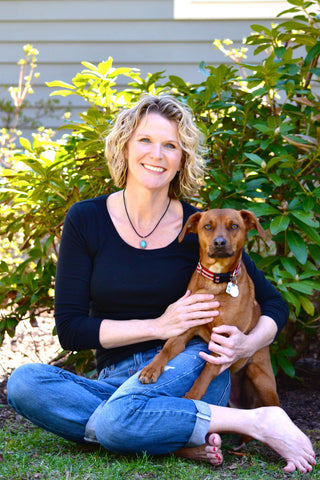Fat Dog

We’re a nation of overeaters. Perhaps up to two-thirds of Americans are overweight or obese. So is it really a surprise that so many of our pets are overweight as well?
Just as with humans, our pets can gain weight for a variety of reasons: Overeating, lack of exercise, medications, illness, etc.
My normally fit and trim mixed-breed dog gained 5 pounds over the course of a year or two. She started at 30 pounds, so those five pounds represented 16 percent of her body weight. She wasn’t running around as much as she had been as a puppy, but the main culprit was “people food.” I realized that almost every day I was tossing her some cheese as I made sandwiches, or letting her clean the pan after I had cooked chicken (or bacon!)
Within just a few months of cutting out almost all fatty stuff, she was back to her svelte self.
For other pets, it’s the amount of food their human companions give them that’s the problem. Your veterinarian can tell you what your pet’s ideal weight should be, and your pet food packaging should provide the proper amount s/he should be eating. It’s a lot like the basic premise of Weight Watchers: Eat less of the bad stuff, and eat more of the good stuff. It’s no coincidence that the popular weight loss plan for humans lets you eat lots of sashimi (raw fish, no rice) and not so much empty calories.
At Green Tails Market, we get questions about how to get pets to lose weight probably more than anything else. While we do carry some low-calorie food options made specifically for weight loss, our recommendation almost always includes “and feed her less.” We only sell high-quality food with no fillers, so just by shopping at a place like ours you’re halfway there. It’s important to measure (or weigh) your pet’s food, at least until you can tell just by sight how much s/he is getting. Many people are shocked to learn just how much they’re really feeding their pets.
Making sure your dog gets enough exercise is easy when you can do a morning and evening walk, which, of course, is beneficial for you, too. But when the winter months come (or even now, when temperatures are stupid-hot) a weekly visit to a “doggy day care” is just as valuable as a walk. We host a Wagging Hour here every other Thursday 5:30-7 pm, which gives your dogs a chance to sniff and run and play with other dogs.
We are always happy to discuss your pet’s individual dietary needs, whether related to weight, skin, or digestion. But don’t worry: We won’t make your pup sit through a meeting or get up on a scale in front of her friends.

